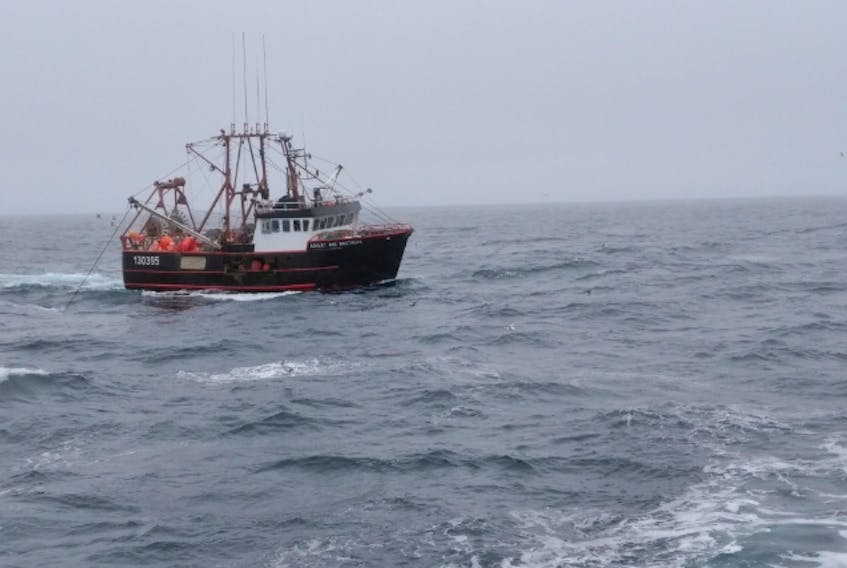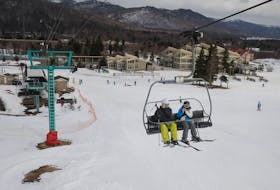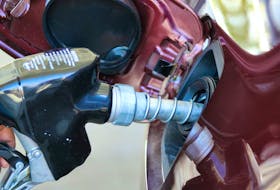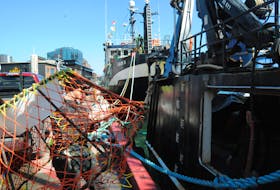ST. ANTHONY, N.L. — This season could be shaping up to be a tough one for shrimp fishers and processors on the Great Northern Peninsula.
According to Department of Fisheries and Oceans (DFO) stock assessments for Shrimp Fishing Area 6 (SFA) fishable biomass declined eight per cent between 2018 and 2019. The female spawning stock biomass also declined, dropping 25 per cent year over year. Area 6 is a key area for inshore harvesters that starts near Cartwright and ends around Notre Dame Bay.
This could mean hard times in an already hard businesses, harvester Chris Rose told the Northern Pen. He is hoping to make enough this season to pay the bills.
The St. Carol’s fisherman owns his own boat, with a four-member crew, and has been fishing since 1991.
“Two years prior to last year I had to give my crew some of my boat’s percentage so they could get enough to qualify for EI,” Rose said. “We are down to crunching numbers that fine.”

St. Anthony Basic Resources Inc. executive director Sam Elliott attended the Northern Shrimp Advisory Committee meetings Thursday, March 5, in Halifax.
At those meetings, he explained, the advisory committee reviews the information in the stock status report and offer their formal opinion to the fisheries minister who determines the final 2020 quotas.
“Based on the science report on the fishable biomass we are looking at probably aout 7.4 per cent cut," he said, adding the figure may fluctuate.
However, it is his understanding the science for Area 6 wasn’t fully completed and several offshore tows were not included.
“Would it have been different?” Elliott said. “If all the tows were in it could have went up or it could have been worse, we don’t know.”
Even though there is one less processing plant in the system this year - the plant in Black Duck Cove was destroyed by fire in 2019 - Elliott said there is not enough shrimp to supply the remaining processing plants in the province.
"They need to restructure somehow,” Elliott said. “It’s going to be difficult. Obviously, there is going to be some pain."
He predicts a shorter processing season for 2020.
He said people are always weathering the storm, and while it's not possible to make the fishery a long-term year-round industry in the province, it’s important for these workers to stay around.
“The younger people are not going into this,” Elliott said. “In order to build this fishery, to get the value out of it, you have to automate. But if you have to automate, you have to have quota to justify making the investment into automation to pay it off.”
Rose wasn’t surprised by the latest science.
“When they are cutting the shrimp, we don’t cry wolf,” Rose said. “No ifs ands or buts about it. You aren’t going to get an argument from me saying the shrimp stock is still there like it was 10 years ago.”
He said when he started in 1999 shrimp fishing was great, then it exploded between 2008 to 2014. It has been going steadily downhill since.
“Since the peak I've lost 80 percent of my shrimp quota,” Rose said. “At the peak I had about 1.7 million pounds to catch. Last summer I caught 140,000. The price is up on the shrimp — that’s why we are still at it — that's all that’s keeping us in it."

Rose turned to turbot fishing to help fill the void created by quote reductions.
He said with the potential 7.4 per cent cut this year, it means less shrimp to catch, less money coming in, less payment for the enterprise, and less payroll for his crew members. It all translates to less spin-off in the community, he said,
He added he is confined to fishing in 3K, from Cape Bauld to Cape Freels, whereas boats from 4R in the Gulf and 3L from Cape Freels south, can fish in their areas as well as 3K.
“We are still stuck in our one area and that’s it, not allowed to move and everyone is coming in taking the fish right off my doorstep,” Rose said. “We always said 3K got a one-way door. Everyone comes in but we are not allowed out. It's very frustrating.
"We didn’t mind when there was lots of shrimp to share,” Rose said. “Everyone was just trying to survive. Where my business is down to crunching numbers, trying to cut wherever you can ... it’s time for something to be done.”
He said TriNav, a marine broker, estimates he has a multimillion-dollar business.
“It's a multimillion-dollar business and we (only) are making enough for EI,” Rose said.
More cuts will be 'crippling': FFAW
FFAW president Keith Sullivan explained all inshore fleets have access to shrimp fishing Area 6, but there are different levels of quota divided among the fleets.

For example, individuals in 3K have higher individual quotas than people in 3L.
Sullivan said the numbers have been relatively stable the last couple of years, but the biggest impact has already been felt.
“We have had massive cuts in the past so we are fishing at low levels now and that means low amounts of work for people in plants and everything else that spins off from that,” Sullivan said. “So any more cuts or decreases at this point in time is going to be absolutely crippling for those in that industry whether you are fishing or in plants.”
St. Anthony was the biggest landing port for shrimp in the past and kept everybody very busy in that area. Now the port is a small part of the economy there where it was massive 10 years ago, he said.
He said while there is potential for a decrease, they have asked DFO to maintain last year's quota, given they have seen stability and managed the fishery by not harvesting the full 10 per cent.
“So hopefully DFO will be able to go along with that and that will be a small help,” Sullivan said. “But really what we got to do is look at how we define the stock and look at the reference points for making the decisions.”
With a bigger shrimp biomass in Area 6 versus Area 5, having a much lower quota doesn’t make sense, he said.
“We got to make sure we deal with that,” he said. “That’s only the responsible thing to do for the people involved in the fishery. Obviously, that’s not going to happen before the season this year but hopefully by next year.
“The shrimp fishery is still extremely important even though it’s declined. The incomes with the price of shrimp have remained reasonable for harvesters so it’s still an important part of their business and we hope it can become more of an important part. It would be good news for everybody.”









